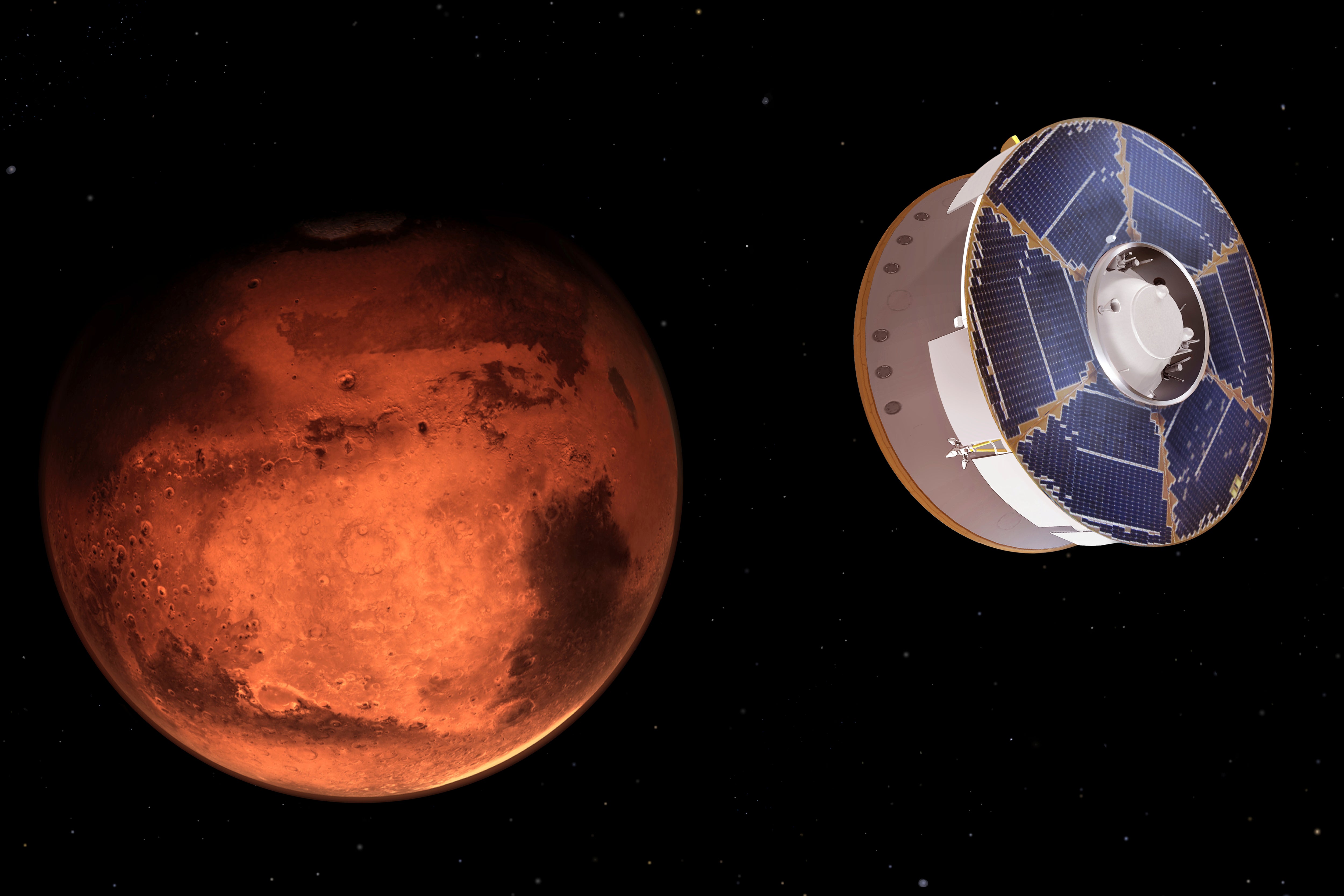Nasa spacecraft hurtles towards Mars as mission prepares for dangerous descent and landing

Your support helps us to tell the story
From reproductive rights to climate change to Big Tech, The Independent is on the ground when the story is developing. Whether it's investigating the financials of Elon Musk's pro-Trump PAC or producing our latest documentary, 'The A Word', which shines a light on the American women fighting for reproductive rights, we know how important it is to parse out the facts from the messaging.
At such a critical moment in US history, we need reporters on the ground. Your donation allows us to keep sending journalists to speak to both sides of the story.
The Independent is trusted by Americans across the entire political spectrum. And unlike many other quality news outlets, we choose not to lock Americans out of our reporting and analysis with paywalls. We believe quality journalism should be available to everyone, paid for by those who can afford it.
Your support makes all the difference.A Nasa spacecraft is hurtling towards Mars, ahead of a descent and landing that mark the most dangerous part of a mission that has seen it travel hundreds of kilometres through space.
When it arrives at the red planet, ready to touch down, its controllers back on Earth will not be able to guide it through the “seven minutes of terror” that it will face as it hurtles and then drifts down to the surface.
As it enters the atmosphere, the Perseverance rover will send back a radio signal to its mission controllers to indicate that it is about to begin the most perilous part of its journey.
But by the time they have heard it, 127 million miles away on Earth, the journey will actually be over, and history will have been decided one way or another.
If it is successful, the rover is part of Nasa’s plan to , and it might even be the spacecraft that finally shows whether there is life beyond Earth and how humans might be able to travel to see it.
But if it fails, the rover might be left as an expensive but useless piece of junk on the Martian surface, like a number of other failed spacecraft that have attempted to explore the difficult world.
Al Chen, head of the JPL descent and landing team, called it the most critical and most dangerous part of the $2.7 billion mission.
“Success is never assured,” Chen told a recent news briefing. “And that’s especially true when we’re trying to land the biggest, heaviest and most complicated rover we’ve ever built to the most dangerous site we’ve ever attempted to land at.”
Success will hinge on a complex sequence of events unfolding without a hitch - from inflation of a giant, supersonic parachute to deployment of a jet-powered “sky crane” that will descend to a safe landing spot and hover above the surface while lowering the rover to the ground on a tether.
“Perseverance has to do this all on her own,” Chen said. “We can’t help it during this period.”
If all goes as planned, NASA‘s team would receive a follow-up radio signal shortly before 1 p.m. Pacific time confirming that Perseverance landed on Martian soil at the edge of an ancient, long-vanished river delta and lake bed.
From there, the nuclear battery-powered rover, roughly the size of a small SUV, will embark on the primary objective of its two-year mission - engaging a complex suite of instruments in the search for signs of microbial life that may have flourished on Mars billions of years ago.
Advanced power tools will drill samples from Martian rock and seal them into cigar-sized tubes for eventual return to Earth for further analysis - the first such specimens ever collected by humankind from the surface of another planet.
Two future missions to retrieve those samples and fly them back to Earth are in the planning stages by NASA, in collaboration with the European Space Agency.
Perseverance, the fifth and by far most sophisticated rover vehicle NASA has sent to Mars since Sojourner in 1997, also incorporates several pioneering features not directly related to astrobiology.
Among them is a small drone helicopter, nicknamed Ingenuity, that will test surface-to-surface powered flight on another world for the first time. If successful, the four-pound (1.8-kg) whirlybird could pave the way for low-altitude aerial surveillance of Mars during later missions.
Another experiment is a device to extract pure oxygen from carbon dioxide in the Martian atmosphere, a tool that could prove invaluable for future human life support on Mars and for producing rocket propellant to fly astronauts home.
Additional reporting by Reuters

Join our commenting forum
Join thought-provoking conversations, follow other Independent readers and see their replies
Comments